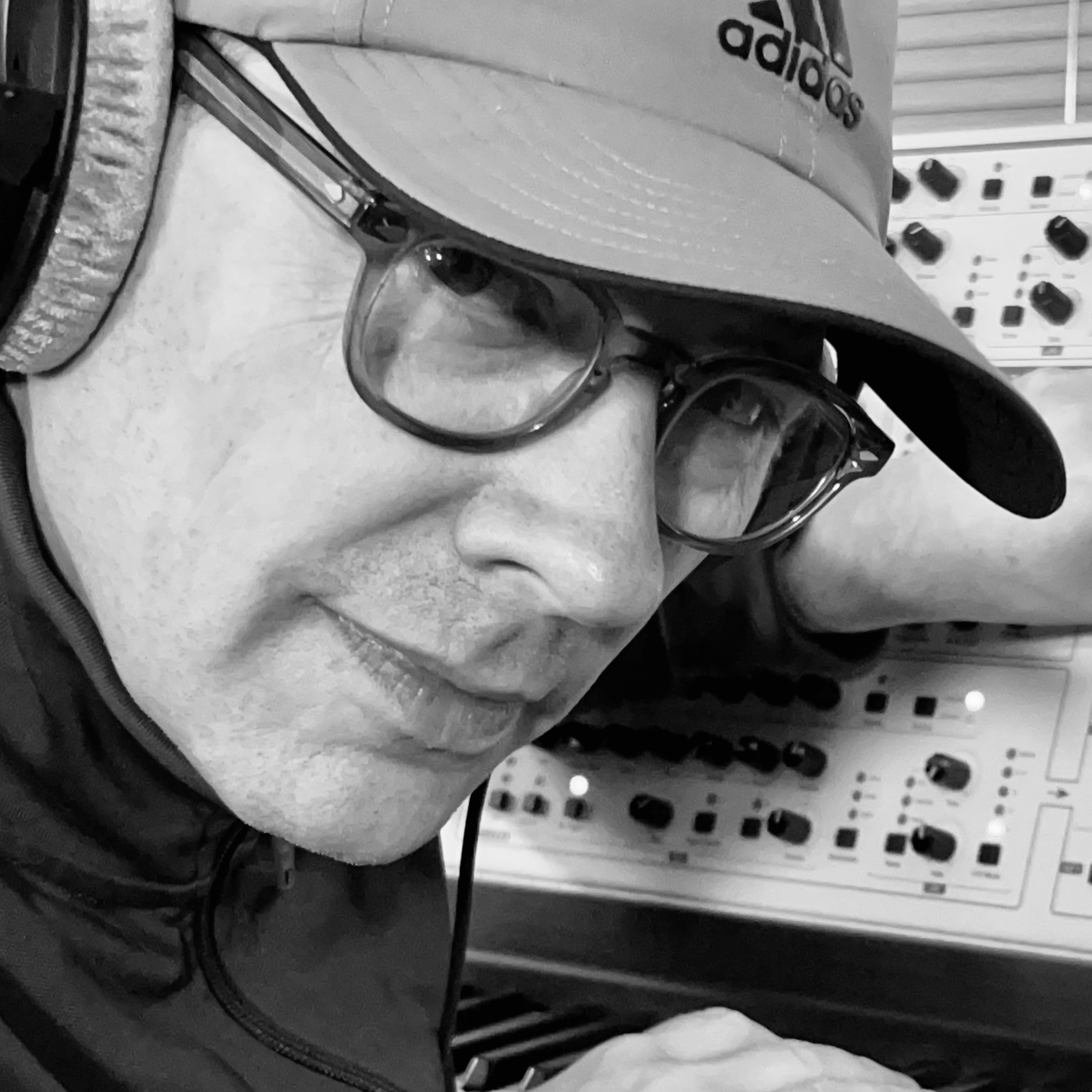“The average upright contains around 12,000 parts - and 80% of those are moving”: How to record a real piano perfectly
Nothing adds organic character to a track like live piano, but recording one isn’t easy. We lift the piano lid and talk about pianistic logistics!
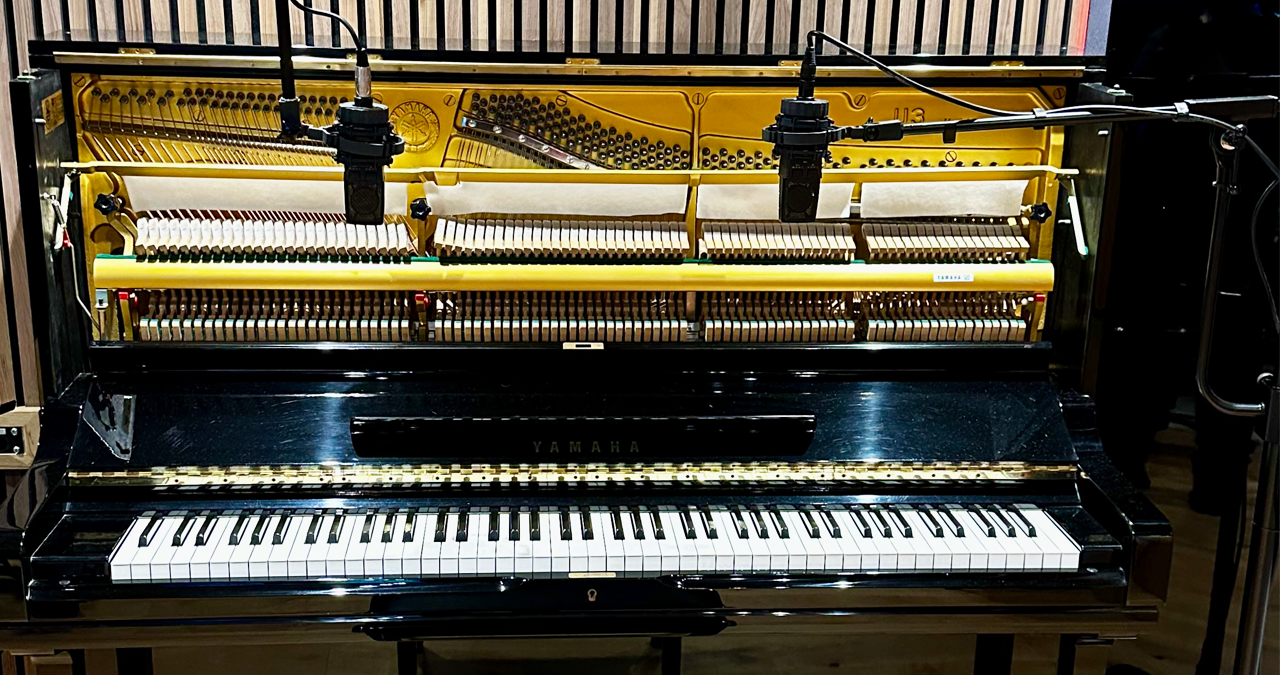
RECORDING WEEK 2025: The upright piano is so much more than a dusty piece of furniture in the corner of your lounge. The average upright contains around 12,000 parts - and 80% of those are moving. It certainly puts the petrol engine in its place! The physical stress of the strings across the piano’s frame is equal to around 20 tons. And you thought life was stressful enough?
Recording a live piano isn’t the easiest task, but it is one of the most rewarding. Part of the problem with relying on DAWs is that it is all too tempting to hit the Quantise button the moment you have recorded a track.
When you play a chord on a piano, you don't play all the notes at the same time. Arguably, you do this when using samples too, but the temptation to quantise is often just too great!
The subtle imperfection of timing is one of the key elements that will truly bring your track to life, but there is another detail, all to do with the piano’s tuning.
If you take a look inside your upright piano, you can't help but notice the incredible number of strings. Most contemporary pianos have 88 notes; higher notes use three strings per note, the middle register uses two, and the low notes just one. This string arrangement helps to balance the volume and sustain of the instrument across registers, but it also means that notes can easily go out of tune.
In an ideal world, acoustic pianos would reside in their own humidity-controlled environments, maintained at a constant temperature of around 20°C. In these conditions, any piano in a reasonable condition should hold its tuning fairly well. Just like any stringed instrument, the more it is played, the more likely the tuning will move.
This isn't necessarily a bad thing, as a little detuning can add to that ‘organic’ quality, and there are many examples of classic recordings where pianos are a little bit out of tune with themselves.
Want all the hottest music and gear news, reviews, deals, features and more, direct to your inbox? Sign up here.
Where tuning becomes a bigger issue is when it has dropped significantly in pitch across the board. Unlike a sampled instrument, your best bet is to call upon the assistance of a piano tuning professional.
Tuning a piano is not a prohibitive task, providing you have the ears and the tools to undertake it, but it is not for the faint-hearted. It is certainly not as simple as merely tuning each string to a tuning app, thanks to the physics of sympathetic resonance and harmonics.
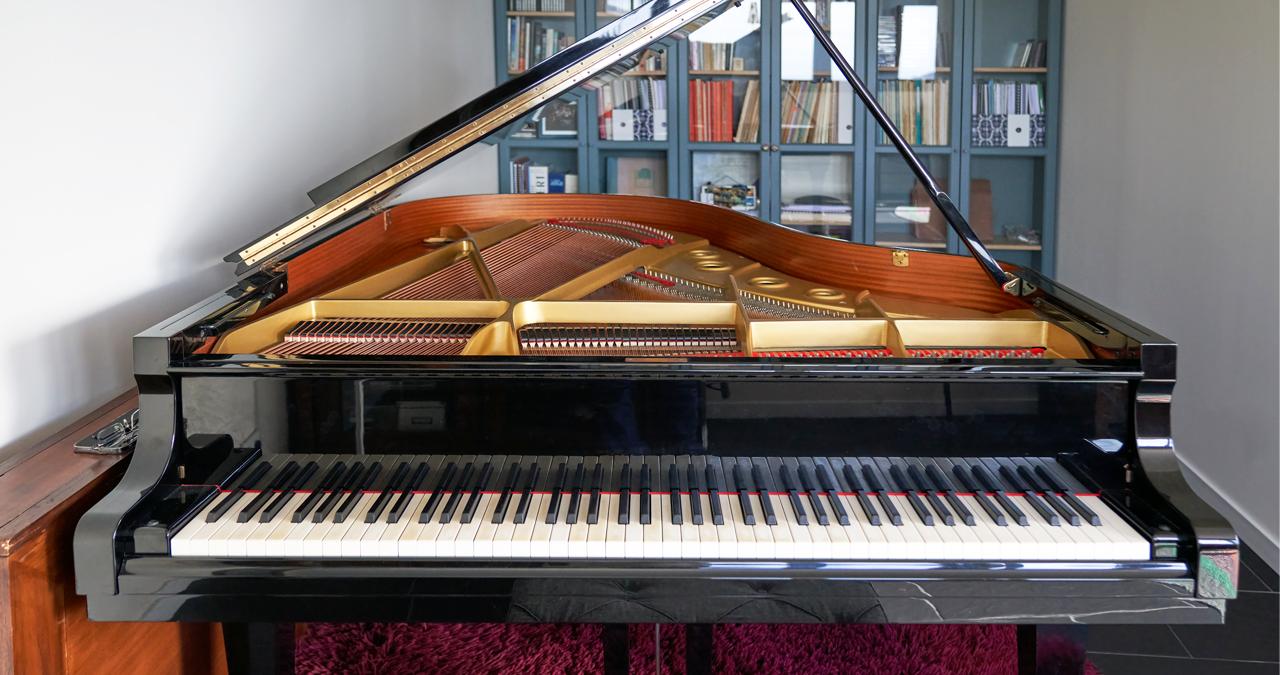
Having established that you have an instrument which is worthy of recording, the next step is to think about microphone placement.
Having access to the front and back of the piano is not essential, but may prove helpful if experimenting. If your piano is up against a wall, the decision is probably made, so don’t worry!
If you do have access to the rear of the piano (which is the side opposite to the keyboard side) it will most likely have the appearance of wood, or be covered by a layer of fabric. What you are seeing here is the underside of the soundboard. This is a crucial component in the piano’s architecture, as it helps the instrument maintain resonance and project its sound.
The opposite side of the piano, where the keyboard lives, will have upper and lower compartments, above and below the keyboard. In terms of recording, we are not terribly bothered about the lower section, as this is where the pedal mechanism lives.
This can often be a little ‘creaky’, meaning that it's not the best place to position a microphone for recording purposes. The upper section, on the other hand, is perfect for recording.
Remove the panel protecting the internal strings by lifting the lid at the top of the instrument and undoing the latches at either end. Once unsecured, the front panel should lift out, revealing the inner workings of the piano mechanism and the strings themselves.
When recording an acoustic piano, the way you approach miking will be informed by the style of music you are recording. In classical recording, the ideal is to have a beautifully engineered, sonically rich room, which will ultimately sound ideal for piano.
As most of us do not have this luxury, we tend to go for close microphone techniques, as it will eliminate the additional sound of the room in the recording, offering more control in the DAW.
Mic selection is a consideration, but it is possible to record a piano with any mic you may have available. Unsurprisingly, the best results come from using at least two mics, ideally as a stereo pair. Condenser or ribbon microphones tend to yield the best results, but good dynamic microphones can perform very well, particularly in certain placements.
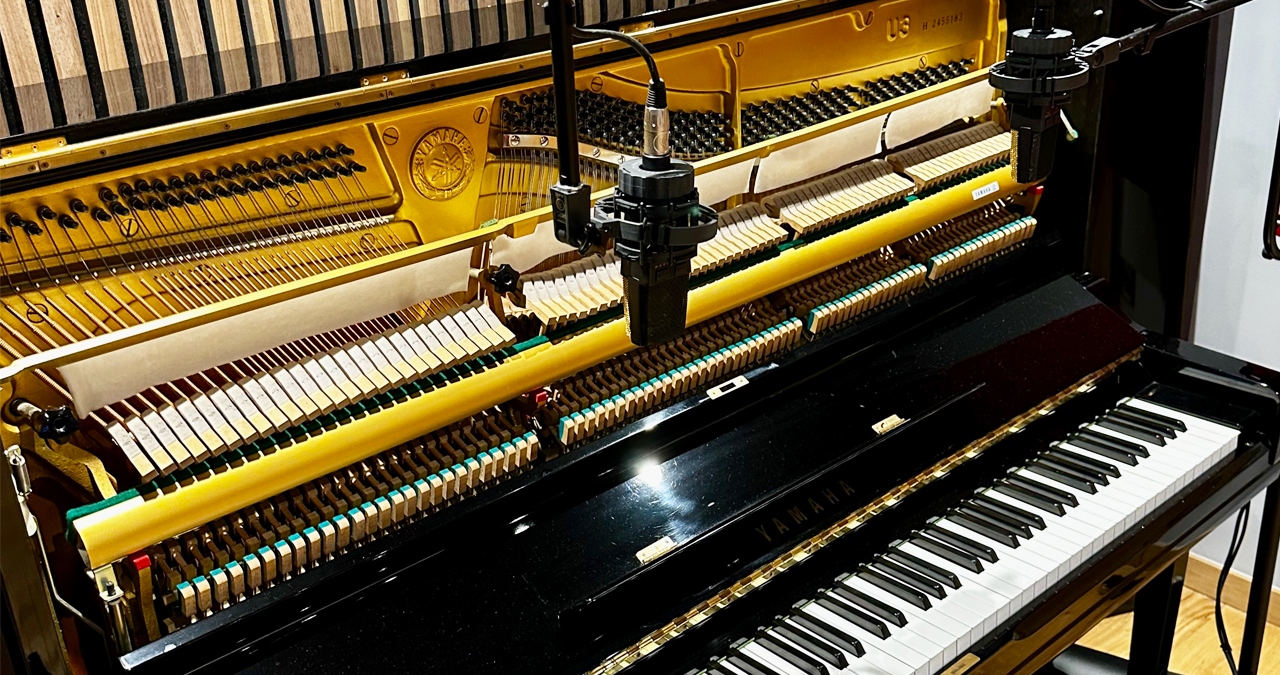
Before you start putting microphones in certain places, it can be exceptionally helpful to listen to somebody else play the instrument, allowing you the opportunity to listen closely in a number of different areas. If it sounds good to your ear, in a certain place, the chances are a microphone will sound just as good.
Let's begin considering some popular options for placement of a pair of microphones.
With the front panel removed, you should hear a bright sound, as the hammers hit the strings. Given the simplicity of the instrument, you will hear lower notes to the left and higher notes to the right.
This can be very useful when dictating where to place microphones, as it can immediately eliminate frequencies that you don't necessarily require. Many commercial recordings do not need much in the way of low frequency content, in fact this content can clutter a mix, so try placing microphones spaced apart, with one a little way below middle C, and another an octave or so above middle C.
In terms of height and distance from the strings you will generally get a harsher sound the closer you are to the hammers.
This can be useful, particularly for percussive material, or if employing the soft or practice pedals, but in terms of blending in a more usual mix, you will probably want to place the mics a few inches away from the strings and hammers. You also have the option to move the microphones higher, so they are still close to the strings, but away from the hammers.
This ‘spaced pair’ technique will give an excellent performance, but for an option, try placing the microphones closer together, as a coincident pair. This arrangement involves placing the mics at an angle of approximately 90° to each other, so that one microphone is aimed towards the lower strings, and the other the upper strings.

This creates a wonderful effect when the microphones are panned in the mix, where you hear the full range of the piano moving across the stereo spectrum, according to played register. The sound moves fluidly from one side of the keyboard to the other, but it can dominate a mix and may not be the best choice if you don’t want the piano front and centre.
If you have access to more than just two microphones, and want to experiment, it is worth accessing the rear of the instrument, to capture a different tonal colour.
By placing the mics about 30cm apart, halfway down the back of the piano and up close to the soundboard, you'll find a sound which is much darker in timbre, but one that is ideal for blending with the brighter sound emitted from the front of the instrument.
Moreover, many engineers find that this darker tone is captured beautifully by dynamic microphones, particularly inexpensive classics like the Shure SM57. Being dynamic, you can get them exceptionally close to the soundboard, though harder playing can sound harsh, requiring the mic to be backed off slightly. Once recorded, this signal can be blended with other mic signals to create the perfect piano sound.
Whether you have an old upright which is in need of tuning, one that has broken strings or even compacted hammers, you will be surprised how much character a piano can bring to a composition and recording. Even a single dynamic microphone can yield something useful, and while we all lust for the ‘perfect’ piano sound, any usage that brings magic to a track has to be worthwhile.
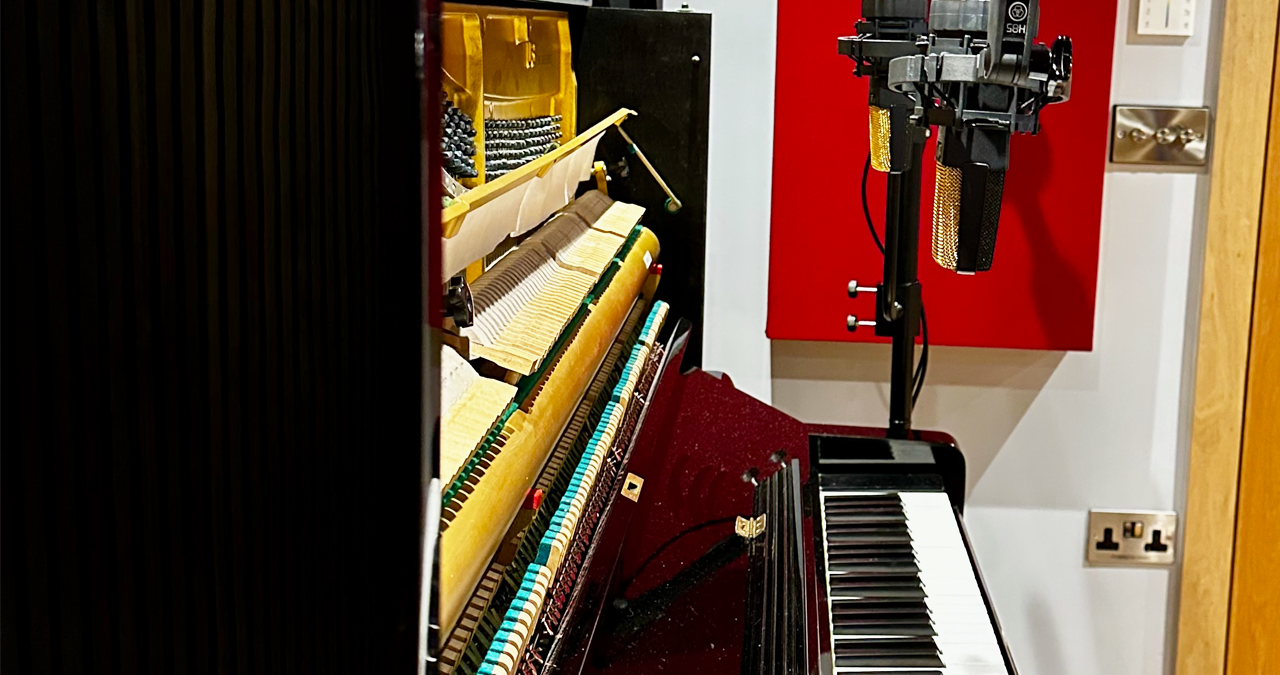
Roland Schmidt is a professional programmer, sound designer and producer, who has worked in collaboration with a number of successful production teams over the last 25 years. He can also be found delivering regular and key-note lectures on the use of hardware/software synthesisers and production, at various higher educational institutions throughout the UK
You must confirm your public display name before commenting
Please logout and then login again, you will then be prompted to enter your display name.
